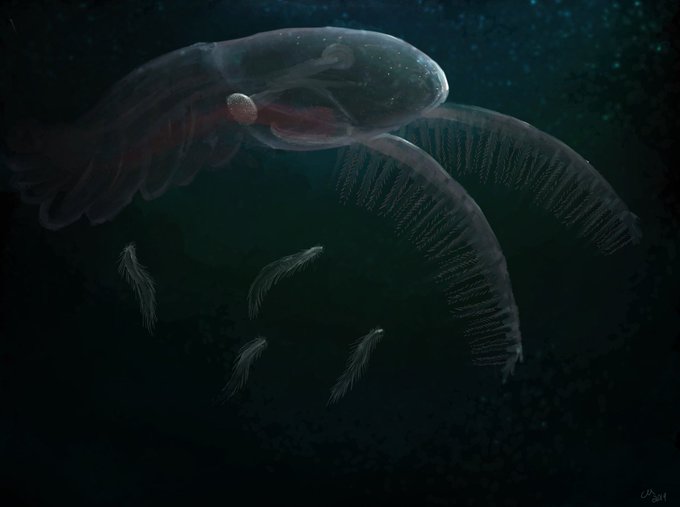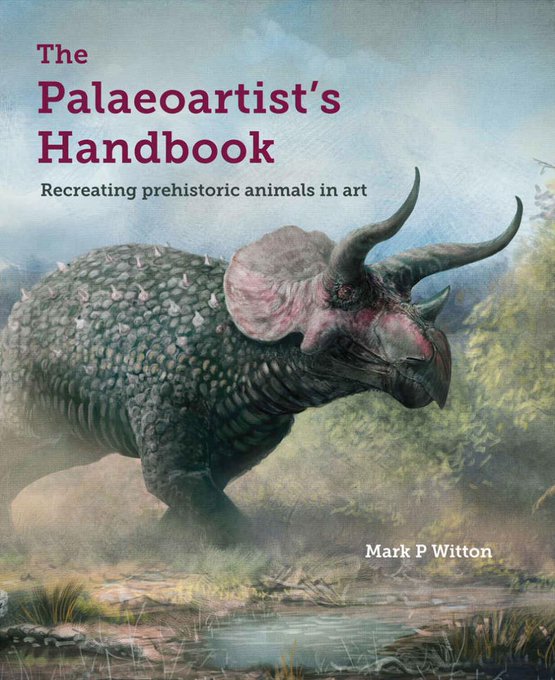palaeoのTwitterイラスト検索結果。 816 件中 33ページ目
Tamisiocaris and Phragmochaeta in their natural habitat, about 900-1000 meters below the ocean surface. The only thing we know about Tamisiocaris is what their antennae looked like. All else is up to interpretation.
#Paleoart #Palaeontology #SciArt
One of the Bodleian's #PolonskyGerman manuscripts, MS. Laud Misc. 96, contains half a dozen different bastarda hands. These images show the range of forms this script can take--and the challenge for palaeographers. https://t.co/UDZieNn0Rk #PolonskyGerman
This rainbow of flints have all been found in Essex and recorded on the @findsorguk database: https://t.co/v0VY7ODFZc They span the palaeolithic, mesolithic and neolithic periods #FestivalOfArchaeology #FindsFriday
Take a look at this incredible & strange duck-billed #dinosaur: Aquilarhinus palimentus, or ‘shovel-chinned eagle nose’, a new species of primitive hadrosaurid that lived 80 million years ago in #Texas. Read here: https://t.co/eZDJ5JIHz9 #Palaeontology @JournalSystPal
It's not really #PortfolioDay anymore but this isn't really a portfolio either so that's fine. Anyway here's some palaeo stuff I've drawn recently!
#palaeoart #paleoart #kindof #notexactly #butohwell
Earlier this year I did this Diabloceratops eatoni reconstruction for a private commission, I'm now finally showing the piece in public: https://t.co/rMQL7J0d7U
#palaeoart #scicomm #palaeontography
Hope I’m not too late for #PortfolioDay. I’m Owen, I’m a palaeontology student and I really enjoy making concepts and concept art. @PlayWarframe is my current fascination. Currently working on developing my digital art skills and learning 3D modelling!
I had forgotten this existed; it was amazing to work with @NHMdinolab at the @NHM_London: https://t.co/6LMy4Y1dcp. However, I really do have a punchable face ☹️. #PaleoArt #PalaeoArt #SciArt #SciComm #Dinosaur #Dinosaurs #Stegosaurus
Oh no, it’s the Echinoderm takeover! Run, Schinderhannes!
#Paleoart #Palaeontology
Palaeophonus caledonicus is an ancient arthropod from the upper Paleozoic.
(Credit: Satoshi Kawasaki)
Another one eats the dust
Another one eats the dust
And another one gone, and another one gone
Another one eats the dust…
Ovatiovermis was described recently-ish, from the Burgess Shale. It ate dust.
#Paleoart #Palaeontolgy #SciArt #FossilFriday
Palaeoisopus problematicus is an extinct species of sea spider from the Devonian period. It measured 40 cm in diameter.
(Credit: Satoshi Kawasaki)
Okay. You asked, I did it, even though it was hell to draw.
Acinocrinus stichus, “row of thorny rings”. This was a giant “Collins Monster” type Lobopodian, extremely tank animals. Acinocrinus took this to a new level.
#Paleoart #Palaeontology #SciArt
More to come soon.
Appreciation post for our graphic designer, Katrin Emery (@commababy)! She's been with #PalaeoPoems from the beginning and has contributed both the logo and guest art. She works with scientists to create eye-catching graphics, and provides website and poster design consultation.
@nlfharrison Field Notes on Science and Nature edited by Michael R. Canfield, The Palaeoartist's Handbook by Mark Witton, and All Yesterdays by John Conway, C.M. Kosemen & Darren Naish
Annie & Louise apparently would sing a song called "I'll away to the Fossil Land." #PalaeoPoems has been looking for this song since the project first started, so if anyone has any information on where it may be written please contact us! (Art by @commababy)
Some sloth palaeoart with this report on new studies on sloth phylogeny: https://t.co/PuQKv1gbqz
We've decided to make a #pride post this month to celebrate a palaeontologist who lived and did field work with female partner in the early 20th century. The poem is a little different- there's no natural history in it! Here's a sneak peek of the art by @commababy.
If you'd like a copy of my recent Mystriosuchus steinbergeri #paleoart, you can grab a high-res version at my #Patreon feed. Subscribe for just $1 a month for huge amounts of palaeontological goodness - art, essays, and details of upcoming projects. https://t.co/0Lk1a7joHY
Happy 220th Birthday Mary Anning! #palaeontology #maryanningrocks #WomenInScience

















































